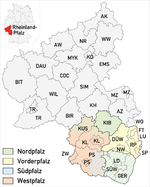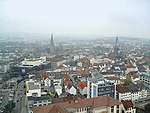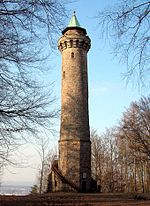University of Kaiserslautern-Landau

The University of Kaiserslautern-Landau (German: Rheinland-Pfälzische Technische Universität Kaiserslautern-Landau, also known as RPTU) is a public research university in Kaiserslautern and Landau in der Pfalz, Germany. The university was formed by the merger of the Technical University of Kaiserslautern and the Landau campus of the University of Koblenz and Landau on January 1, 2023. There are numerous institutes around the university, including two Fraunhofer Institutes (IESE and ITWM), the Max Planck Institute for Software Systems (MPI SWS), the German Research Center for Artificial Intelligence (DFKI), the Institute for Composite Materials (IVW) and the Institute for Surface and Thin Film Analysis (IFOS), all of which cooperate closely with the university.RPTU is organized into 12 faculties. Over 20,000 students are enrolled at the moment. The RPTU is part of the Software-Cluster along with the Technische Universität Darmstadt, the Karlsruhe Institute of Technology and Saarland University. The Software-Cluster won the German government's Spitzencluster competition, the equivalence to the German Universities Excellence Initiative for clusters.
Excerpt from the Wikipedia article University of Kaiserslautern-Landau (License: CC BY-SA 3.0, Authors, Images).University of Kaiserslautern-Landau
Paul-Ehrlich-Straße, Kaiserslautern Lämmchesberg
Geographical coordinates (GPS) Address Website Nearby Places Show on map
Geographical coordinates (GPS)
| Latitude | Longitude |
|---|---|
| N 49.423888888889 ° | E 7.7530555555556 ° |
Address
Technische Universität Kaiserslautern Rheinland-Pfälzische Technische Universität, Campus Kaiserslautern
Paul-Ehrlich-Straße
67663 Kaiserslautern, Lämmchesberg
Rhineland-Palatinate, Germany
Open on Google Maps








